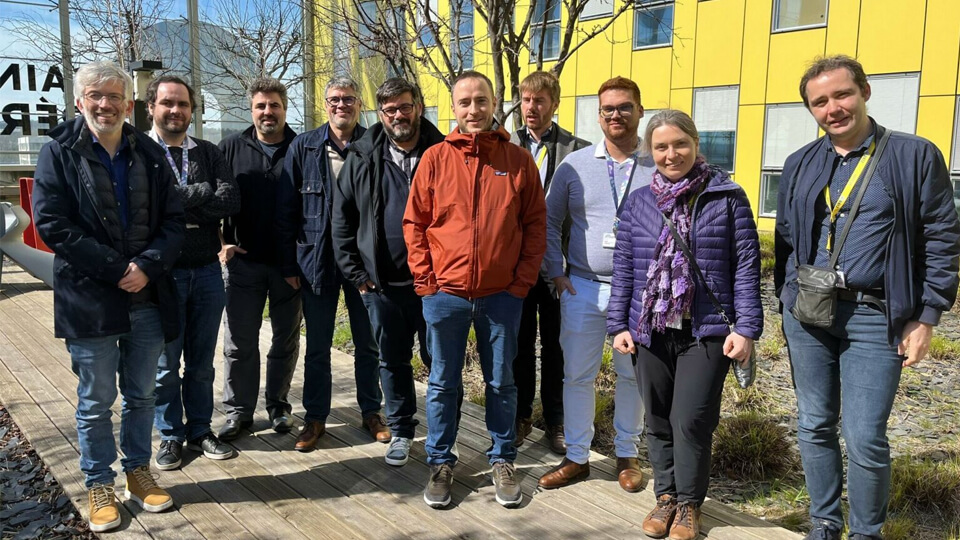Following the completion of the S2C (System & Safety Continuity) project, a collaborative inter-IRT project involving Saint Exupéry and SystemX, focusing on digital continuity between system definition and safety analyses, IRT Saint Exupéry decided to launch a follow-up: the CoSMoS (Collaborative Safety (&RAMT) Modelling Studies) project. Begun in March, this is an opportunity to look back on the success of the S2C project and to take stock of what is expected of the CoSMoS project.
Context
In a context where architectures are being restructured to meet the challenges of decarbonising mobility and transport, the obligation to guarantee the same level of safety is leading to the adoption of new methods. Aeronautical manufacturers are faced with an increasing number of possible architectures, with ever more demanding certification constraints and operating safety standards (RAMS). Engineers are increasingly basing their designs on models representing the system architecture (Model Based System Engineering – MBSE) and operational safety analysis models (Model Based Safety Assessment – MBSA). The advent of MBSA (Model Based Safety Assessment), which verifies the safety of architectures, aims to improve the understanding of dysfunctions as early as possible, in order to avoid the significant risk of problems appearing too late, which could lead to rework with a non-negligible financial impact.
To improve this understanding of system dysfunctions as early as possible, the IRT Saint Exupéry and SystemX had launched in 2019 a collaborative project S2C (System & Safety Continuity) alongside 14 partners, industrialists, academics, software editors and engineering specialists around a budget of 3.8 million euros.
The aim of the project? To define a methodological framework with tools to guarantee and maintain the consistency of engineering data between system architectures and operational safety analyses, while meeting civil aviation certification requirements.
Deliverables from the S2C project
The IRTs have worked on three complementary and interdependent areas of work:
– The consistency of System Engineering (SE) / Safety Assessment (SA) engineering data in a co-engineering process: supply of a set of models (process, data-model, traceability plan, other models, etc.) and recommendations to guarantee the consistency of engineering data shared between the SE and SA teams.
– A practical MBSA guide: this gives the keys to start a modelling project, as well as the tricky points and pitfalls to avoid for a RAMS engineer used to traditional methods such as fault trees (FTA).
– Consistency between MBSE and MBSA models: three different methods have been developed and tested on the IRT Saint Exupéry’s case study, the AIDA UAV, and propose ways of collaborating further upstream between these specialists, using tools to identify potential inconsistencies.
The project, finished at the beginning of 2023, has enabled the two IRTs to pool their wide-ranging expertise and has produced processes, methods, guides and tools that will support the increasing maturity of manufacturers in MBSA approaches and the integration of MBSA into their development.
For all the deliverables from the S2C project
A follow-up for the IRT Saint Exupéry with the CoSMoS project (Collaborative Safety (&RAMT) Modelling Studies)
As part of the CoSMoS project, the IRT Saint Exupéry will continue its coherence work on operational safety analyses executed at different system levels, carried out in an extended enterprise context, alongside Safran, Airbus Protect, Satodev, LGM, ONERA, DGA and Naval Group.
With a duration of three years and a budget of 2 million euros, the aim of the project is to increase the maturity of the use of MBSA analyses in order to combine them with each other, but also with traditional FTA-type analyses, to reflect the heterogeneity of industrial practices, favouring collaboration between customers and suppliers.
Ultimately, the aim is to be able to share part of the information relating to Safety (&RAMT) analyses on operational projects with different stakeholders. A methodological framework is expected as a deliverable, setting out how people can work together. It will then be validated by the use of the project partners’ tools (SimfiaNeo and Cecilia Workshop), enhanced by this method, on public and private case studies.
"The aim of the CoSMoS project is to fully integrate the RAMST analyses carried out using MBSA models into the development cycle of a complex system in an extended enterprise. Thanks to the IRT Saint Exupéry’s and partners’ specific skills, the CoSMoS project is designed to remove the identified technological barriers and ensure effective transfer to industrial partners".


